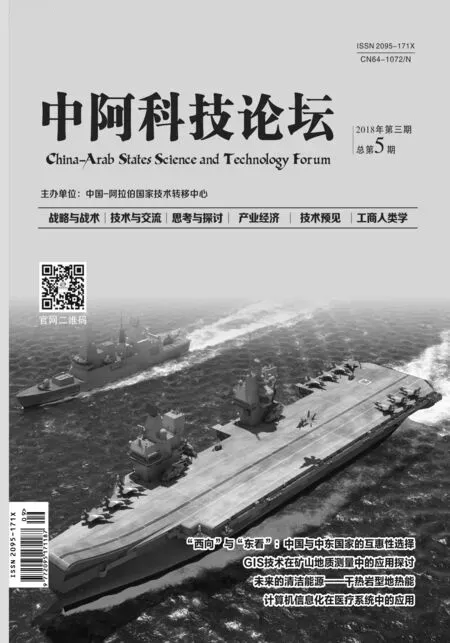Research on the Roles of Auxiliary Tools in Team Development of Business Mode
Ge Jianxin, Han Lingling, Xu Hongjia
(School of Business,Central University of Finance and Economics,Beijing,100081)
Abstract: At present, more enterprises focus on business mode innovation to maintain their competitive edge,so the quality of ideas generated in this process have impacts on the effect of business mode innovation.By using the business anthropology, this paper explores the application effect of auxiliary tools in developing business mode.Research shows that the use of auxiliary tools has a positive impact in team idea generation.In this paper, the effect of two auxiliary tools (object, sketch, business model canvas)and text in the process of idea generation was compared through experiments.The purpose of this paper is to test whether auxiliary tools have positive effects on teamwork and innovation by developing a new scale. At last, the experimental results show that physical objects, sketches and business model canvases have positive effects on teamwork and innovation in the process of team innovation.
Keywords:business mode;auxiliary tools;idea generation;team innovation process
1 Introduction
With the call of “mass entrepreneurship and innovation”, a majority of enterprises become more knowledgable about innovation. And the innovation of business mode is one of the focal points that the enterprise pays attention to. In order to study the factors that promote the innovation of enterprise business mode, scholars explore through different research methods. At this time, scholars proposed business anthropology is an important research tool.Business anthropology is a subject that applies theories and methods of anthropology to study,discuss and solve the practical problems of business administration. Its research is used in the fields of enterpriseorganization,productdesign,communication strategy and intercultural communication. Under the call of innovation and entrepreneurship, enterprises continue to innovate so that business anthropology has more development opportunities[1].
The first step in innovation is to generate numerous practical and novel ideas,especially in the field of business mode innovation. The quality of ideas is directly determined by the quality of ideas,which in turn affects the effectiveness of business mode innovation.Research results show that auxiliary tools such as physical objects,templates and sketches are effective tools for organizing team innovation processes[2]. The introduction of auxiliary tools in diverse team idea generation activities can promote team cooperation and enhance team creativity[3],and ultimately improve team innovation performance.Therefore,the paper focuses on the idea generation of business mode,studies the process of idea generation through two typical auxiliary tools such as object &sketch and business model canvas, and investigates the evaluation on the innovative results. As for the research methods, the paper collects and analyzes data and information through interviews and in-depth experiments in business anthropology.
2 Literature Review
2.1 Auxiliary Tools and Idea Generation
The theory of boundary object lays a theoretical foundation for the studyof Objects or Visual artifacts in team activities[3]. The definition of boundary object,proposed by Susan Star[4], refers to objects that are shared and sharable in different problem-solving environments. She describes boundary object as objects that are used to mediate a shared environment.Boundary object is a medium for organizing decentralized cognition in society.Therefore,members of different groups are allowed to give different meanings to the same object, according to their own special needs,at the same time,making the cognition divergent through linguistic or non-linguistic means such astheinteraction based on paintingor sketch[5].
In design field, many auxiliary tools of idea generation have been developed to help designers generate more design choices. Formal auxiliary tools can be roughly classified into intuition and logic[6].The tricks of intuition break Mental Blocks. The methods of Logic involve the systematic decomposition and analysis of problems, and largely rely on technical databases, scientific and engineering principles, and solutions or programs directory[6]. In this paper, the author discusses the intuition related to auxiliary tools. The methods of intuition are classified into generation, shift, step by step, organization and integration according to their different roles in the process of idea generation[6].The auxiliary tools used in this paper play roles in many aspects of idea generation, and it is difficult to be divided into one of the above categories, such as object & sketch. Objects can be used as diversified stimulus to generate creative ideas[7],while sketches as the carrier of visualization can be used to organize and integrate ideas.However,the wide application of above methods in the design field provides practical support for the auxiliary tools in this study to promote idea generation. Another study found that the combination of several auxiliary methods and tools can also be considered as boundary object.
The auxiliary methods are not only extensively applied in design field mentioned above, but also used in design thinking to enhance communication and creativity among team members[3]. Recent research on innovation management has advocated a participatory approach to idea generation[8]and idea management[9]. Equal participation is important for the successful generation and divergence of ideas(Klein, 2002). This area has begun to explore the potential benefits of auxiliary tools for conference.The related literatures of idea generation have been proposed and it analyzed several methods to enhance the creativity of divergent tasks. The most widely known and tested method is brainstorming[10], which is mostly implemented in teams, both online(electronic brainstorming)and offline. Other methods include the use of objects to facilitate a meeting, like Serious Play(refers to team members introduce some interesting content, making the process of like playing games with more interesting experience in the complete, formal, serious or important process of the complex task, team members will also be willing to spend more time and energy), especially is used to deal with the conference with complex tasks(strategy formulation)[11]. Serious Play depends on auxiliary tools to stimulate idea generation or develop complex strategies[12].For example,three-dimensional objects have been used in Serious Play, and the author finds that it can support abstract and figurative processes of innovative ideas in complex situations[12]. Sketches are recommended for collaborative idea generation[6],because it can facilitate teamwork, communication,and stimulate numerous new ideas based on existing ideas.Sketches and prototypes can integrate ideas.In order to aid the idea generation, studies show that formal constraints and guidance on collaborative processes are useful for improving process effectiveness and promotingequal participation.
2.2 Auxiliary Tools Used in Business Mode Innovation
Auxiliary tools are effective tool for the team organization and focus such as objects and templates and sketches[2]. However, only a few methods, such as distancing,abstracting[13]and three-step scenario[14], have been explicitly proposed in the literature of business mode innovation. From the point of the literatures reviewed in the paper,these methods have not been widely used and tested business mode. In the past two years, Osterwalder has specially developed an innovation template for developing new ideas of business mode, namely the business mode canvas adopted in this paper,which has been focused and recognized by the academic and business circles[15]. Although it has been applied in practice, its effectiveness has not been verified scientifically.
2.3 Selection of Auxiliary Tools
As mentioned above,this paper selects object&sketch and the business mode canvas as research subjects, and tries to compare their different roles in idea generation of diversified teams. The reasons for choosing the two kinds of tools are as follows:
Firstly, it has been demonstrated that the two types of auxiliary tools belong to the third category of boundary objects, such as objects, models and maps according to previous studies,which are supported by the same theoretical basis. On the one hand, they are comparable,and on the other hand,they are easier to compare.
Secondly, the essence of object & sketch is a kind of stimulation starting from three-dimensional objects (all the objects provided in this paper are three-dimensional objects).As a means of recording,summarizing, communication, integration and presentation, sketch can stimulate the ideas generation, but it is behind the real objects. The business mode canvas is a stimulus that starts on a plane (two-dimensional). From this perspective, they represent two completely different auxiliary types.
Thirdly, object & sketch represents a kind of unlimited divergence, which depends on the freedom of creativity of team members. However, due to the fixed framework, the business mode canvas is actually a divergence under constraint conditions.Therefore, using object & sketch can better test the effectiveness of the business mode canvas.
Fourthly, based on the nature of the problem,business mode canvas is a tool specially developed for the business model innovation, which has been recognized by academic circle and the industry[15].It is reasonable to choose it as an auxiliary tool. For objects,Serious Play based on objects is often used to solve complex problems such as strategy[11].Business model innovation and strategic innovation has the similarity; both of them are complex, affecting enterprise and stakeholders[16]. The author can predict that objects could solve problems of business mode innovation. Sketches visualize concepts, which is more conductive to inspire new ideas, and widely used in design field. Many lines of sketches are incomplete in designing tasks,and the ambiguity and uncertainty allows designers to interpret the sketches in different ways and put new ideas into it. The communication and interaction between designer and sketches is critical to creative design[17].Sketches can make team members better recall previous ideas and integrate the team.Therefore,it is considered that the combination between sketches and objects can stimulate creativity, record creativity and integrate team process,and become an effective means to solve complex problems.
2.4 Research Methods of Business Anthropology
Business anthropology is subject that applies theories and methods of anthropology to the study of business management. Its application can be traced back to Hawthorne experiment.Now,through constant exploration,it is gradually improved and established.Business anthropology provides a unique mode of thinking and research perspective for existing research[18].It is widely used and developed in many fieldssuch as enterprise organization,human resources management, consumer behavior analysis, product design, marketing, advertising and communication strategy,enterpriseculture,cross-culturalmanagement,cross-cultural adaptation in international marketing,corporate social responsibility,enterprise of local and group, an emerging group and ethnic minority entrepreneurs[19]. The application of business anthropologyisconductivetoshortenthecommunication distance, improve company performance, and assist product design and marketing in a multicultural enterprise. Business anthropologists understand the cultures of organizations through unique knowledge and insights. They not only help organizations understand and audit cultural core so as to improve efficiency, but also help organization establish cultural rules, goals and values to enhance the cultural soft power of organizations[20]. The symbolic codes of human behavior differences, underlying psychological preferences, and cross-cultural cooperation agreement are widely used. Therefore,business anthropology is increasingly applied to business management.
The methods of business anthropology have many advantages.The subject,covering anthropology,sociology, business management, and the business management behavior of human society, cannot be quantitatively analyzed in many cases. Therefore,business anthropology applies its normative research methods to study human behaviors that are difficult to quantify through field observation and other methods.The promotion of the method is beneficial to solve many problems emerged in China’s development into the new normal in business field, giving more humanistic care to the organization and management.The humanistic care can resolve psychological perplexities brought by the diversity of man-machine, interpersonal relationship in modern business organizations soas tomake employees accept the modern business management of organization.
Business anthropology emphasizes the use of anthropological theories and methods to solve problems in the fields of business and industrial production. The main research methods of business anthropologyincludingethnography,covertobservation,participatory observation, in-depth interview and questionnaire focuses on observing human behavior and finding their potential demands. The American Institute of Research Lab (IRL) studies how to establish an effective learning environment by means of participatory observation, in-depth interviews and interactive analysis. Its research results are widely used in business administration to improve work efficiency[21]. Some scholars also start to use anthropological methods to study business management. Kathy Rudlkin and Hemant Deo found that the methods of participatory observation were effective for the banking industry in the study of bank institutions to improve customer satisfaction[22].All in all,the methods of business anthropology focus on the characterization of human behavior and organizational culture structure under different cultures, and its efficiencyisreflectedincollection,analysisandstrategy formulation of market information. In order to better depict the performance and reaction of the experimenter, this paper chose the research methods of business anthropology — experiment, in-depth interview and questionnaire.
3 Research Design
3.1 Research Mode
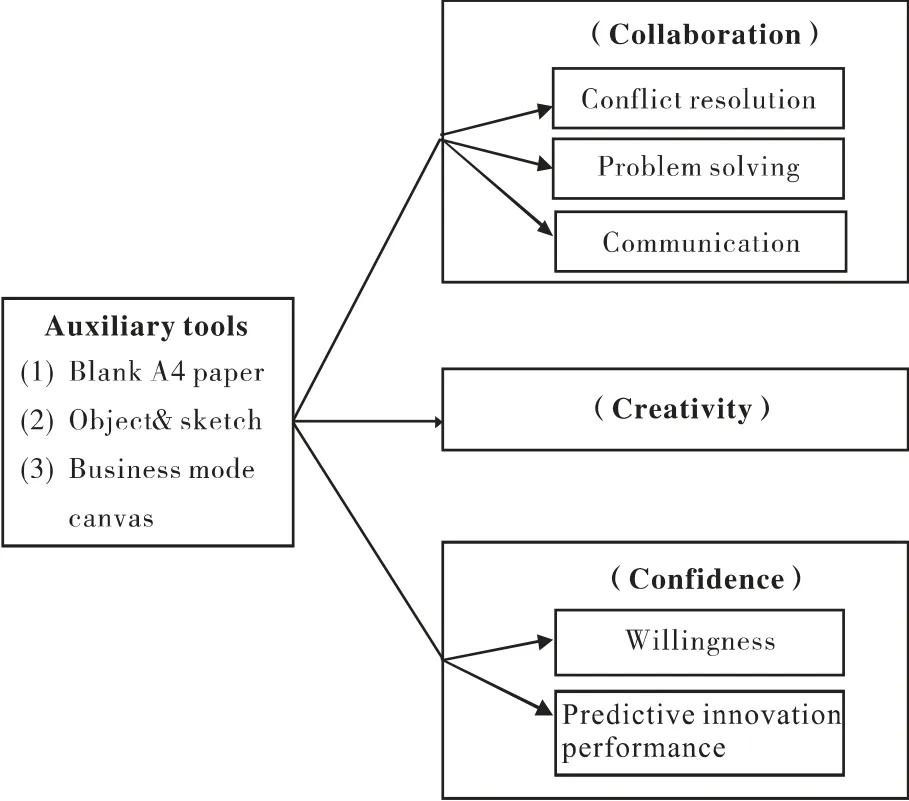
Figure 1 Research Mode
Based on the above discussion, this study used teamwork and team creativity as two main measurement variables for promotion, and measured the impact of assistive tools on business model idea adoption willingness and expected innovation performance. To better compare the effectiveness of the two auxiliary tools, blank A4 paper will be used as the control group. Taking blank PPT/word/A4 paper as the way to collect and record ideas, it not only represents the traditional daily behavior of the enterprise, but also reflects the current situation of the enterprise. The research model is shown in the following figure, where the bold line represents the relationship of the key research and the thin line represents the relationship of the secondary research.
3.2 Research Hypothesis
3.2.1 Auxiliary Tools and Collaboration
Collaboration is defined by the Knowledge,Skill and Ability scale(KSA)used by Steven and Campion[23]. The KSA scale classifies the interpersonal requirements for team cooperation into conflict resolution, cooperative problem solving, and communication. There are ten specific KSAs requirements.
The research shows that the use of auxiliary tools can provide a shared platform to express different ideas, facilitate the transformation and integration of different viewpoints, and effectively handle conflicts. At the same time, the shared platforms promote the communication between each other smoother and are conductive to create an active and harmonious communication atmosphere, which can effectively prevent the transformation of conflicts to interpersonal conflicts and promote team members to solve problems cooperatively. The shared three-dimensional bodies encourage the team members to propose ideas freely according to their knowledge and understanding, while the sketches help communicate and further improve ideas,and act as an auxiliary shared cognition to obtain appropriate knowledge from different sources[24]. Business mode canvas provides a framework for thinking and analyzing problems, a shared communication platform and discourse system, and helps team members communicate with each other, form consensus and reduce conflicts[14]. Therefore, the author proposes the following hypothesis:
H1-1: compared with the control group,business mode idea generation has a positive effect on team cooperation by using object&sketch.
H1-1a: compared with the control group,business mode idea generation has a positive effect on conflict resolution by using object&sketch.
H1-1b: compared with the control group,business mode idea generation has a positive effect on cooperative problem solving by using object &sketch.
H1-1c: compared with the control group,business model idea generation has a positive effect on communication by using object&sketch.
H1-2: compared to the control group, business model idea generation has a positive effect on team cooperation by using business model canvas.
H1-2a:compared to the control group,business mode idea generation by using business mode canvas has a positive effect on conflict resolution.
H1-2b:compared to the control group,business mode idea generation has a positive effect on collaborative problem solving using business mode canvas.
H1-2c:compared to the control group,business model idea generation has a positive effect on communication by using business model canvas.
3.2.2 Auxiliary Tools and Creativity
Through establishing a shared environment,auxiliary tools promote equal participation of team members in idea generation activities, which is conducive to stimulating innovative ideas and promoting idea generation[25], transforming group thinking into team thinking and improving team innovation ability. Two auxiliary tools can enhance team creativity through providing diverse incentives,promoting the consciousness of imagination and competitiveness,and generating and organizing ideas through concept visualization. Currently, software and tools have been used to generate ideas for team innovation. Some information systems generate ideas by stimulating cognition, like CyberQuest by using images and sounds to stimulate cognition. The axon acts as a visual electronic drawing board to generate and organize ideas[26].Because of its uncertainty and ambiguity, boundary objects can provide various stimulus for team activities and inspire different viewpoints, which will create an atmosphere of positive competition. Sketches and business model canvases can capture, integrate, motivate and improve ideas while visualizing them. Therefore, the auther proposes the following hypothesis:
H2-1: compared with the control group,business model idea generation has a positive effect on team creativity by using object&sketch.
H2-2: compared with the control group, using business model canvas to generate business model ideas has a positive effect on team creativity.
3.2.3 Object&Sketchand BusinessModeCanvas
Leif and Gunnar argued that the first step is to look for possible alternative solutions in the process of a creative problem-solving idea generation. It means that decision makers and problem solvers need to collect information related to problems,which may lead to successful transformation.After gathering alternative solution, the decision maker needs to choose the most appropriate solution to the task. In other words, the successful completion of idea generation is a combination of divergent thinking and convergent thinking. That is to say, in the context of problem solving, divergent thinking starts from a specific problem, generating diversified options and perspectives about the problem. After divergent thinking, convergent thinking narrows generated options to obtain some satisfactory solutions.
The divergent thinking is reflected by creativity,while the convergent thinking is reflected by teamwork. Object &sketch is unlimitedly divergent,it can through diverse object stimulation inspire imagination and creativity[7]. However, business model canvas has an established framework,compared with the prior rules sketch can stimulate creative ambiguity and reduce uncertainty[17], so the author puts forward the following hypothesis:
H3: compared with business model canvas,object & sketch has more positive effect on team creativity.
In contrast, the business mode canvas is regarded as fixed framework of team innovation, it can not only provide shared communication platform and discourse system, but also can solve some arguments caused bay fixed framework and conflicts,which is conducive to carry out team activities smoothly and reach an agreement[14].Object&sketch is completely based on different understanding of team members and objective of individual differences, which makes different ideas inevitably experience the process of evaluation, trade-off,collision, conflict and integration in business model framework and selection[26]. Therefore, the author proposes the following hypothesis:
H4: compared with object & sketch, business model canvas has more positive effect on team cooperation.
3.2.4 Idea Generation from Willingness and Expected Innovative Performance
To measure whether auxiliary tools influence team members’confidence in developing business model idea, and whether there exists overconfident bias, the author measured the level of willingness of team members and the expected effect of team members assuming the implementation of the business model idea. Zhang Wenqin et al.[27]investigated 90 work teams of 47 enterprises and found that the team innovation atmosphere had a significant positive effect on members’innovation.Du Sheng et al. pointed out that no matter the individual innovation attitude,innovation behavior,or team innovation performance, the level of team innovation atmosphere has become an effective predictor of innovation in their research on promoting individual innovation by team level. Anderson and West[28]believe that Team Climate Inventory (TCI)includes long-term goal, participation security, task orientation and innovation support. The team cooperation variables selected in this paper include conflict resolution, communication and cooperative problem solving, and their connotation has many overlaps and similarities. Therefore, it is speculated that the positive effect of auxiliary tools on team cooperation and creativity will have a positive effect on team innovation performance. Therefore, the author proposes the following hypothesis:
H5-1: compared with the control group, team members have a higher willingness to adopt business model ideas in using sketches&templates.
H5-2: compared with the control group, team members have a higher willingness to adopt business model ideas in using business model canvas.
H6-1: compared with the control group, team members thought that the business model idea would have a more positive effect in using sketch &template.
H6-2: compared with the control group, team members thought the business model idea would have a more positive effect in using business model canvas.
At the same time, based on rationality,completeness and authority of the business model canvas,the author proposes the following hypothesis:
H7-1: compared with object & sketch, team members have a higher willingness to adopt ideas in using business model canvas.
H7-2: compared with object & sketch, team members have higher expectations to the idea execution in using business model canvas.
3.3 Research Methods
In this paper,the experimental method is mainly used to collect experimental data through questionnaires and test the above hypothesis. The author obtains research conceptions and theoretical basis through literature review, and get primary data through experiment method. In the process of data analysis, the author firstly analyzes the reliability,validity and factor analysis, and then focuses on single factor analysis of variance so as to explore the relationship among two main auxiliary tools, team cooperation, and team creativity and the degree of difference. Secondly, the impact and differences of the two auxiliary tools on the business model idea of willingness and expectation innovation performance are discussed.
3.4 Experiment Design
Due to limited space, the paper mainly focuses on the study of measurement of variable, so the experiment tasks and conditions, experiment requirements and questionnaire are not be repeated.The experimental data obtained in this paper is based on the perception of team members in the process of team activities.Therefore,all dependent variables are measured from the individual level rather than the team level.
3.4.1 Teamwork
We measure teamwork through asking experimental subjects to evaluate teamwork during idea generation. Based on the KSA scale[23], the measurement of teamwork includes two major aspects that are interpersonal relations KSAs and self-management KSAs. This paper focuses on the impact of auxiliary tools on mutual relations between people, rather than the existing KSAs that are conducive to team cooperation in individuals, so the interpersonal relationship KSAs is selected for the determination of the team cooperation scale.Interpersonal KSAs are classified into three dimensions and ten specific KSAs, including conflict resolution (3 KSAs), cooperative problem solving(2 KSAs)and communication (5 KSAs). Kickul et al.[29]further verified the validity of the KSA scale through empirical research on the basis of Steven and Campion,and explained each dimension in detail.
3.4.2 Team Creativity
Similarly,the author measures creativity in team processes based on the perceptions of team members.Hocevar divides creativity measurement into 10 categories: divergent thinking test, attitude and interest scale, personality scale, biography scale,teacher nomination, peer nomination, superior evaluation, product judgment, excellence,self-reported creative activity and achievement. The author focuses on the impact of using creative tools on generating novel and practical ideas,especially on creativity in idea generation. Based on above“self-reported creative activities and achievements”,professor Eppler developed a four-item scale to measure creativity in the ideas generation perceived by team members in using auxiliary tools. The scale validity was empirically tested. This paper directly uses this scale to measure creativity.
3.4.3 Business Model Idea Using Willingness and Expected Innovation Performance
In the research of relationship between interdisciplinary teams and team quality and team innovation, Doris et al. evaluated the quality of innovation from four dimensions including Magnitude(the importance of innovation results), Radicalness(the extent of status change caused by innovation results), Impact (the extent of improvement of organizational effectiveness by innovation), and Novelty (the change of novelty brought by innovation). The particularity of business model experiment determines that it cannot test the performance of innovation results in practice.Therefore,the author measures the possible effects of the above four aspects through the expected performance of team members. The business mode through willingness and predicated innovation performance reflects team members’confidence. In studying the innovation atmosphere of the team, Du Sheng and Xu Jue[30]sorted out previous literatures and found that some individual innovation performances were evaluated by employees, some by superiors, and some by experts. Due to the difficulty in finding relevant experts and the absence of the situation of superior evaluation, self-evaluation method is selected in this study.
4 Research Results
4.1 The Descriptive Statistical Analysis of Samples
The experiment is conducted for staff of Ziguang Educational Institution. The most important requirement of the subjects was the diversity of background, as well as the diversity of characteristics, which were embodied in various aspects such as age, highest education major, native place, department, position type, and working years.The main features of the descriptive statistical analysis of effective questionnaires are shown in Table 1.
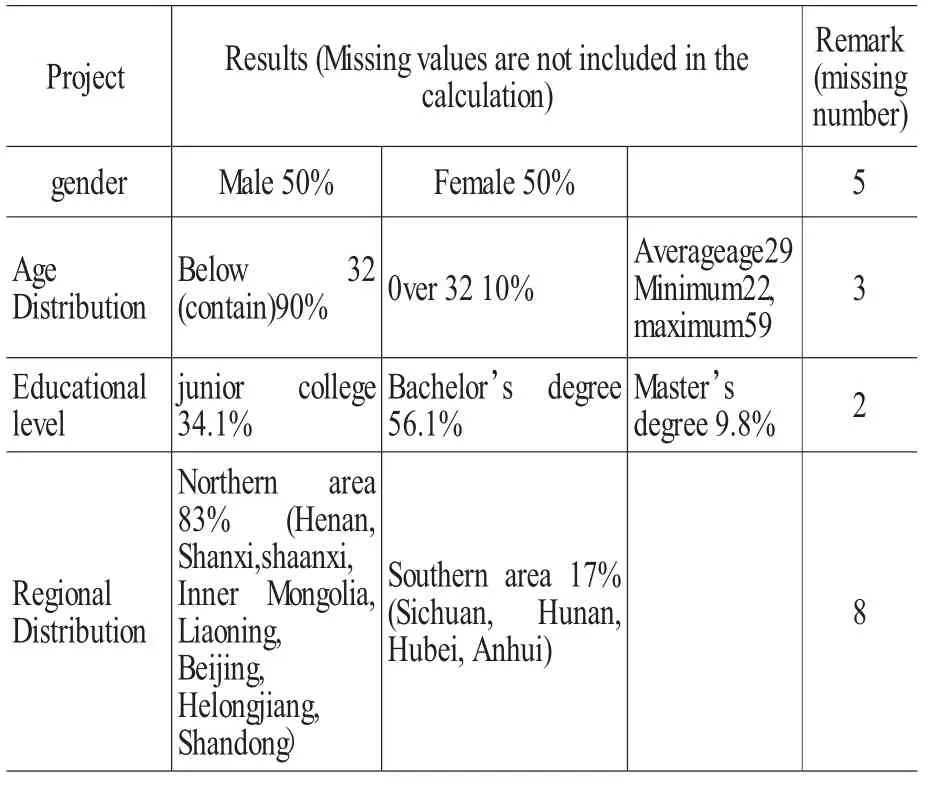
Table 1 Descriptive Statistical Analysis
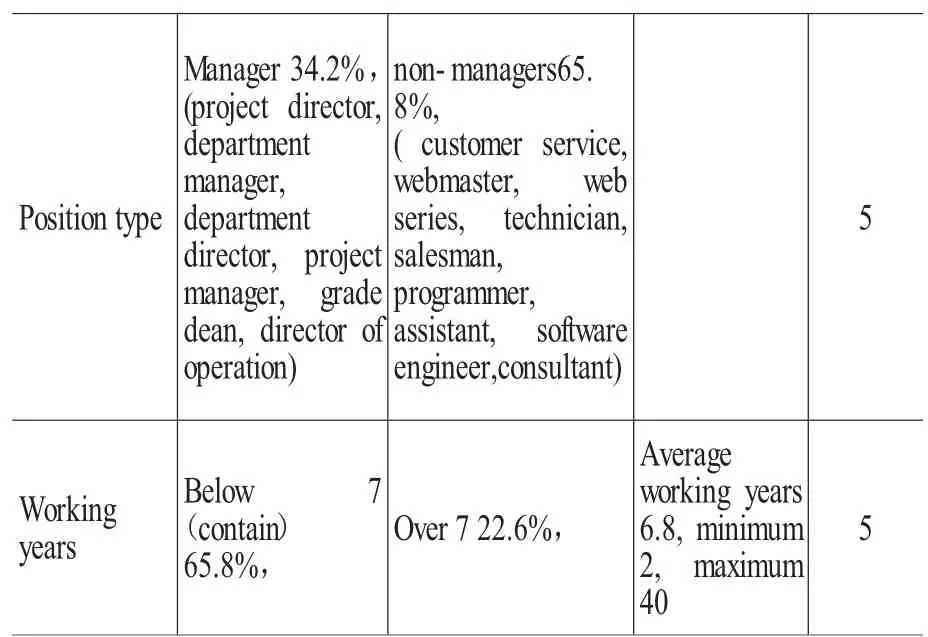
Position type Manager 34.2%,(project director,department manager,department director, project manager, grade dean, director of operation)non-managers65.8%,( customer service,webmaster, web series, technician,salesman,programmer,assistant, software engineer,consultant)5 Working years Below 7(contain)65.8%,Over 7 22.6%,Average working years 6.8, minimum 2, maximum 40 5
4.2 Reliability and Validity Test of the Scale
According to the test, the reliability coefficient of each scale used in this paper is above 0.6,and the reliability coefficient of individual variables is above 0.9,which is better,as shown in Table 2.
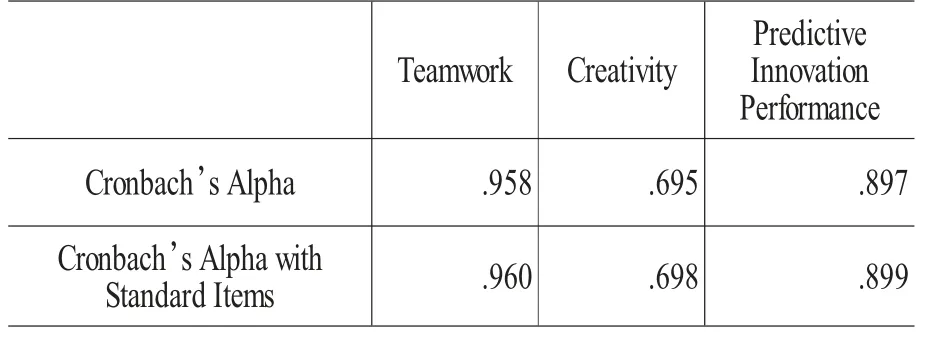
Table 2 Cronbach’s Alpha Coefficient Test Results
All scales used in this paper are existing scales,so the content validity is guaranteed. KMO and Bartlett spherical test values are usually used to test the scale’s structural validity. Meanwhile, the experiment adopts principal component method and varimax rotation, and apply KMO sample measurement method and Bartlett spherical to test whether it is suited to analyze factors.
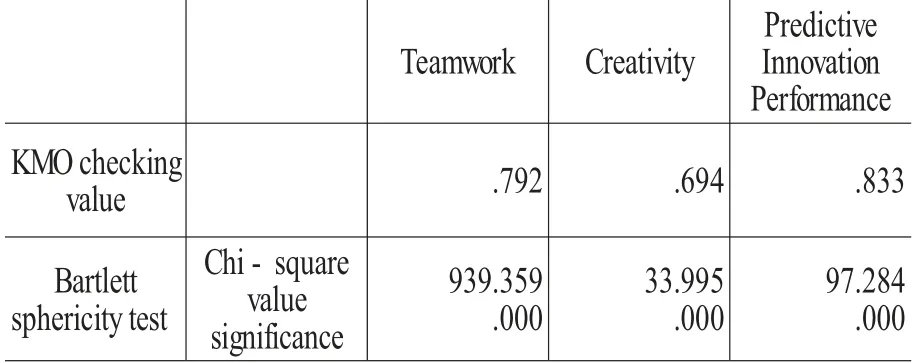
Table 3 KMO and Bartlett Test of Sphericity
By analyzing the teamwork, creativity and expected innovation performance, KMO test values were all between 0.5 and 0.9, and the probability of Bartlett test statistics was less than 0.01, reaching significant level, which indicates that the data was significantly correlated,the scale’s structural validity was acceptable,and factor analysis could be done.
4.3 Factor Analysis of Each Variable
Confirmatory factor analysis was conducted for teamwork, and factor loading was shown in Table 4.On the whole, the three dimensions of principal component analysis team cooperation have been well distinguished. Most of the projects have a large amount of load on the corresponding factors,indicating that the measurement project can well explain the factors, and the cumulative contribution rate of the three factors is 73.106%. The principal component of creativity and predictive innovation performance is one, consistent with the scale design,and the cumulative contribution rate reaches 56.709% and 76.778% . Therefore, each variable obtained more ideal explanatory factors through factor analysis.

Table 4 Results of Confirmatory Factor Analysis
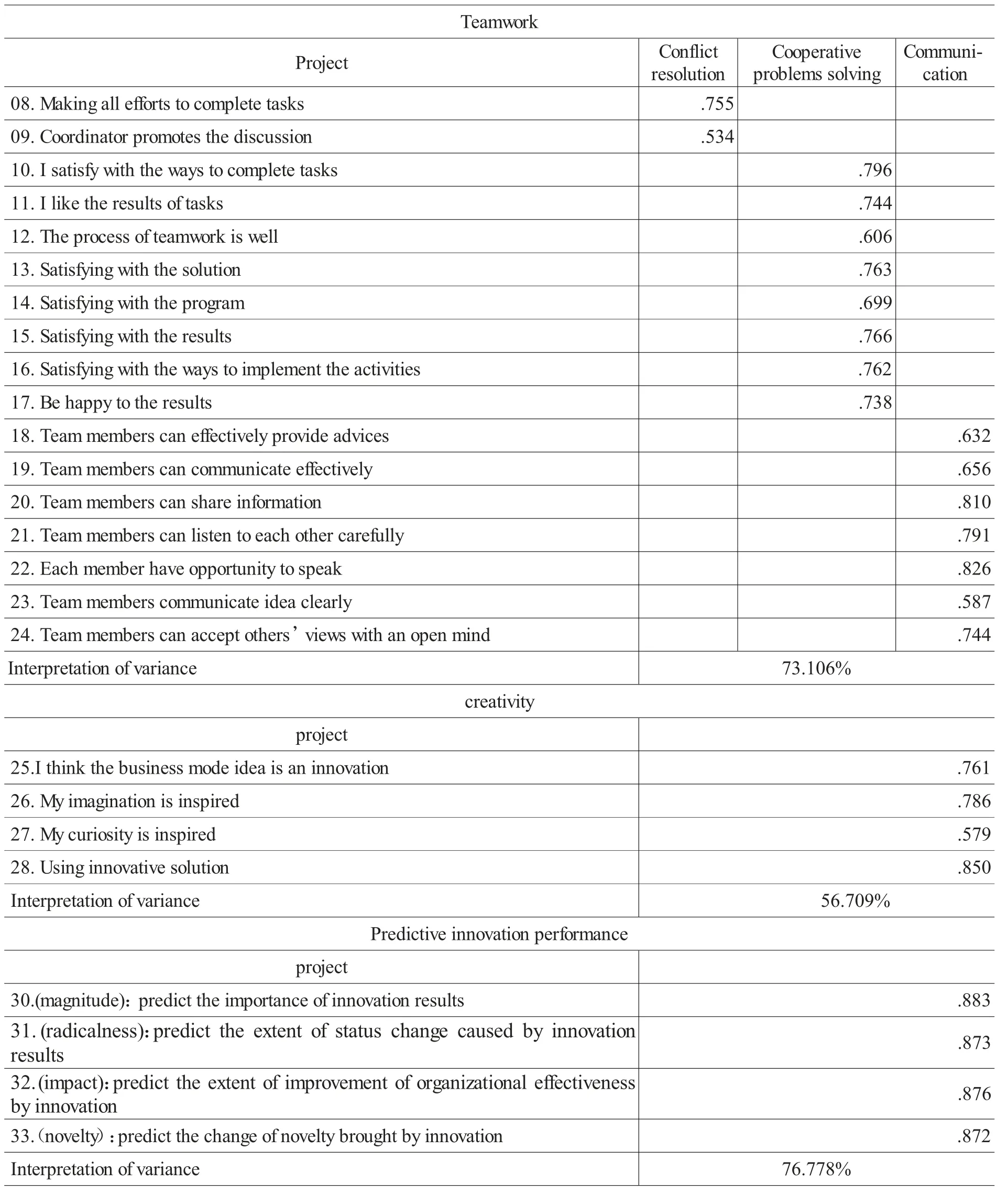
Table 4 Results of Confirmatory Factor Analysis
4.4 Single factor Analysis of Variance(ANOVA)
4.4.1 Test for Hypothesis Concerning ANOVA
The test results for variance homogeneity of each dependent variable are shown in Table 5. It can be seen from the significance (Sig.)column, all p values were greater than 0.05, but the results were not significant. The null hypothesis with equal variance under all experimental conditions could not be rejected,so the hypothesis that the sample was from the same population and the homogeneity of variance was satisfied.
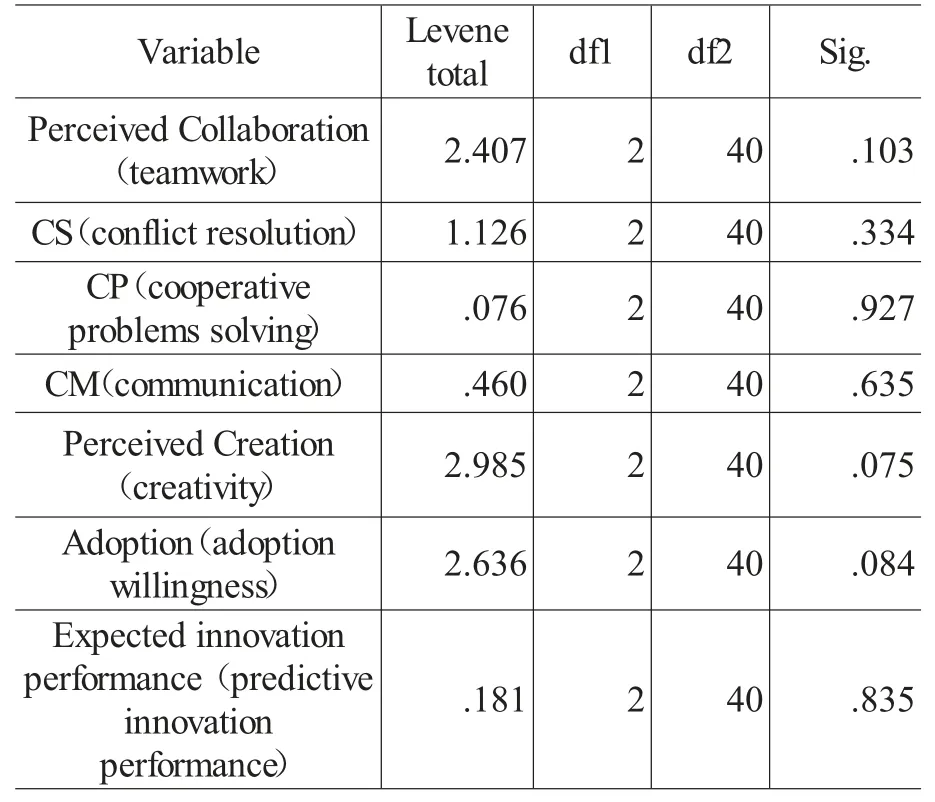
Table 5 Test for Variance Homogeneity
4.4.2 ANOVA
Detailed analysis of variance is conducted for each variable in the following sub-variables.
(i)Teamwork and Its Dimensions of ANOVA
The results are shown in Table 6. At the significance level of 0.05, all p values in the significance column are less than 0.05, in general,there are significant differences in teamwork variables and their three dimensions under different experimental conditions, which can be further analyzed by ANOVA in groups.

Table 6 Teamwork Variables and Three Dimensions of ANOVA
(ii)Creative ANOVA
The results are shown in Table 10. At the significance level of 0.05, since all p values in the significance column are 0.026 and less than 0.05,there are significant differences in creative variables under different experimental conditions in general,and ANOVA in groups can be further conducted.

Table 7 creative inter- group analysis of variance
(iii)Business Mode AdoptingtheWilling ANOVA
The results are shown in Table 8. Under the significance level of 0.05, the p value of the significance column is 0.481, which is much greater than 0.05, but the results are not significant.Therefore,the null hypothesis with the same intention cannot be rejected. Further analysis of variance between the two groups showed that the p value of control group and the object&sketch was 0.232,and the p value of control group and business model canvas group was 0.449. The p value of object &sketch and business model canvas was 0.645, which were greater than the significance level of 0.05, so people can’t refuse to adopt the same between the original hypotheses, and they can think of three experimental conditions with the same willingness.
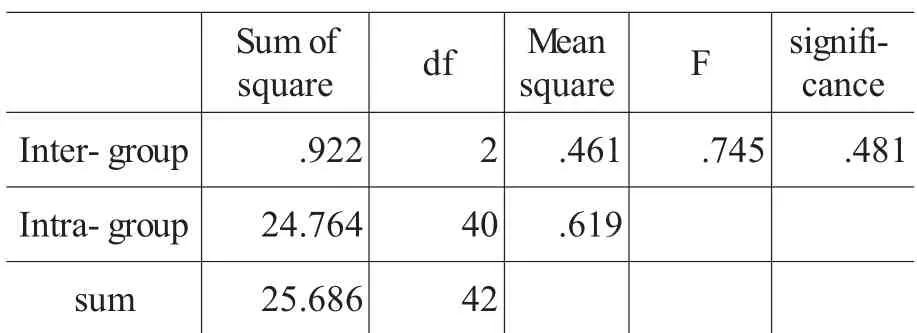
Table 8 Creative Analysis of Variance between Groups
(iv) The VNOVA of Predicted Innovation Performance
The results are shown in Table 9. Under the significance level of 0.05, the p value of significance column is 0.604, which is much greater than 0.05.The results are not significant, and the null hypothesis that all groups expect the same innovation performance cannot be rejected. Further analysis of variance in two groups, we can see between the control group and object & sketch the variance analysis p value is 0.579, and the control group and the business model canvas variance analysis of p value is 0.319. Object &sketch and business model canvas variance analysis p value is 0.642, which are greater than 0.05, the author can’t refuse the expected innovation performance of the same null hypothesis, so they can think of three experimental conditions with the same innovation performance.
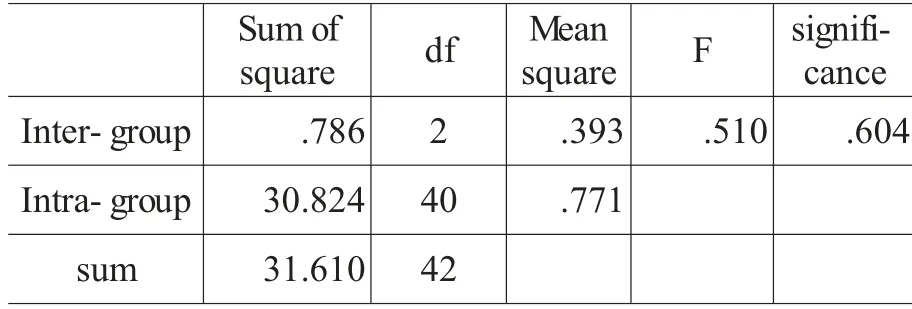
Table 9 Inter- group Analysis of Variance for Predictive Innovation Performance
5 Discussion and Enlightenment of Research Results
5.1 Results of Research Hypothesis
According to the above results of reliability and validity analysis, factor analysis and variance analysis, the verification of research hypothesis in this paper is shown in the table below.
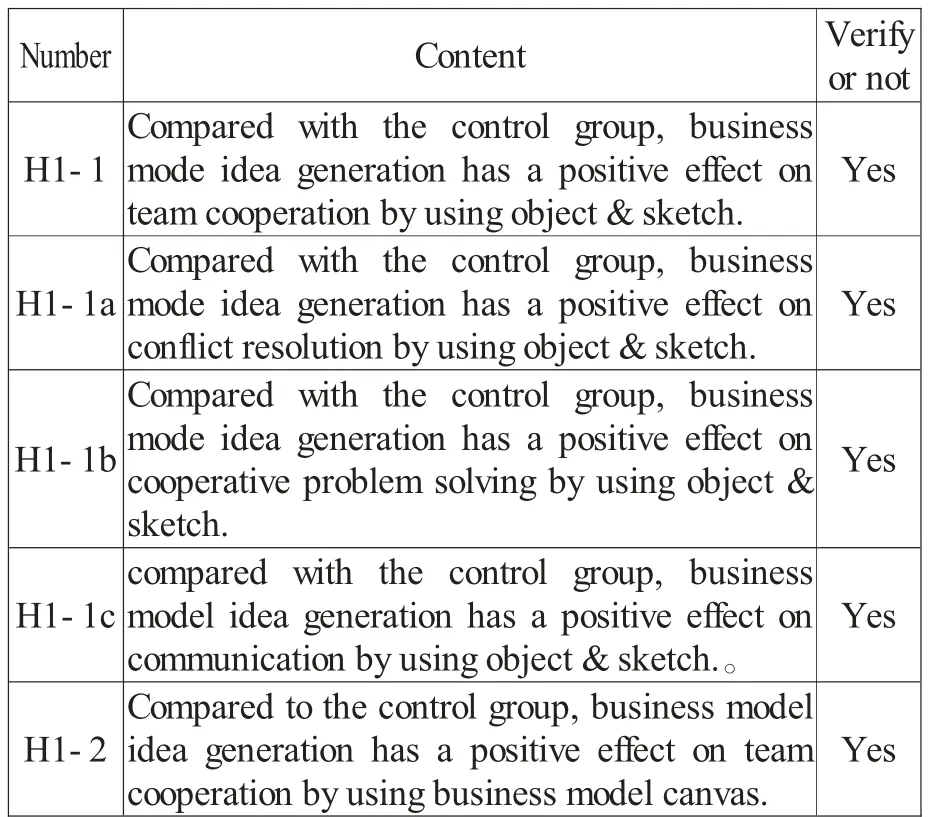
Table 10 Summary of the Results
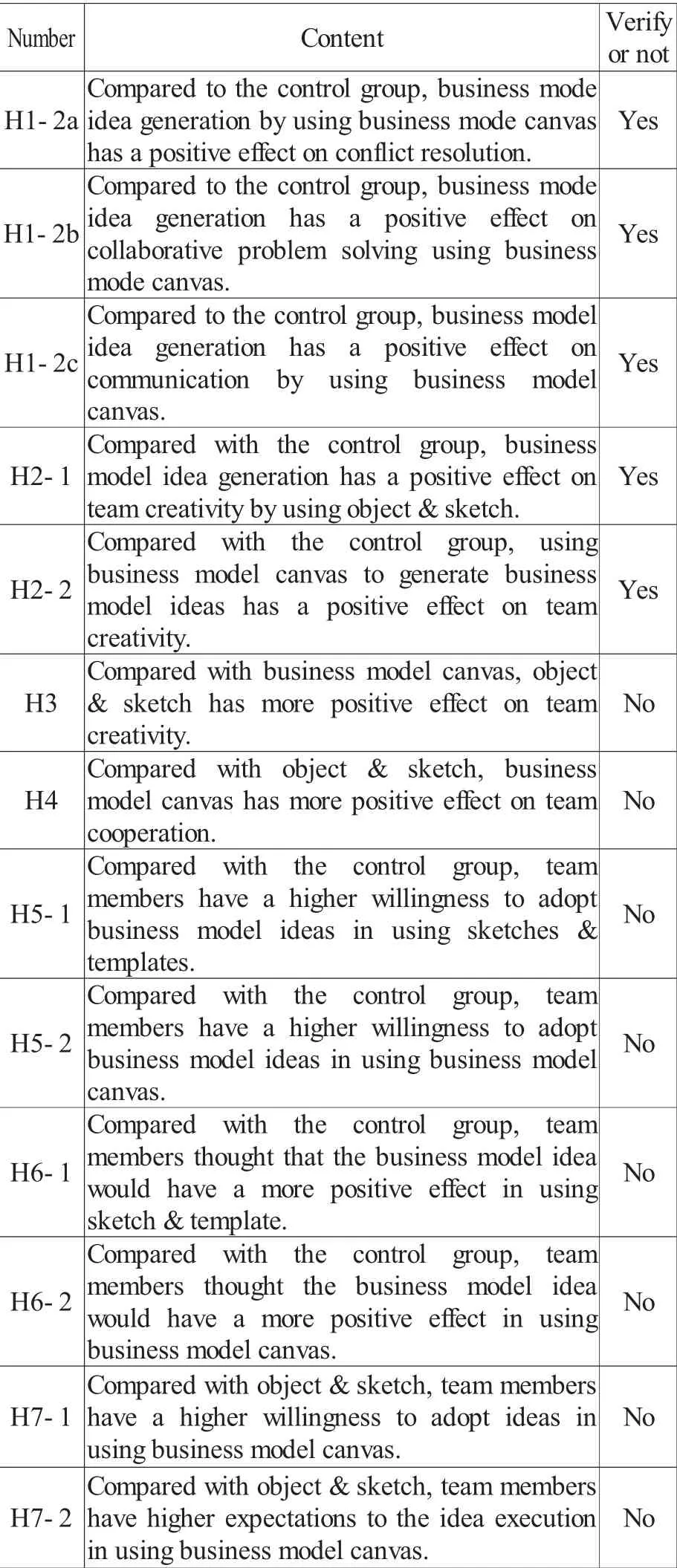
Number Content Verify or not H1-2a Compared to the control group, business mode idea generation by using business mode canvas has a positive effect on conflict resolution.Yes H1-2b Compared to the control group, business mode idea generation has a positive effect on collaborative problem solving using business mode canvas.Yes H1-2c Compared to the control group, business model idea generation has a positive effect on communication by using business model canvas.Yes H2-1 Compared with the control group, business model idea generation has a positive effect on team creativity by using object&sketch.Yes H2-2 Compared with the control group, using business model canvas to generate business model ideas has a positive effect on team creativity.Yes H3 Compared with business model canvas, object& sketch has more positive effect on team creativity.No H4 Compared with object & sketch, business model canvas has more positive effect on team cooperation.No H5-1 Compared with the control group, team members have a higher willingness to adopt business model ideas in using sketches &templates.No H5-2 Compared with the control group, team members have a higher willingness to adopt business model ideas in using business model canvas.No H6-1 Compared with the control group, team members thought that the business model idea would have a more positive effect in using sketch&template.No H6-2 Compared with the control group, team members thought the business model idea would have a more positive effect in using business model canvas.No H7-1 Compared with object&sketch,team members have a higher willingness to adopt ideas in using business model canvas.No H7-2 Compared with object&sketch,team members have higher expectations to the idea execution in using business model canvas.No
5.2 Discussion of Research Results
In this paper, taking 45 staff from different backgrounds of Ziguang Educational Institution as objects, the experiment was carried out in 9 groups under three experimental conditions.Finally,43 valid questionnaires were obtained, and some hypotheses were verified,and data analysis is conducted by SPSS software.The main conclusions are as follows:
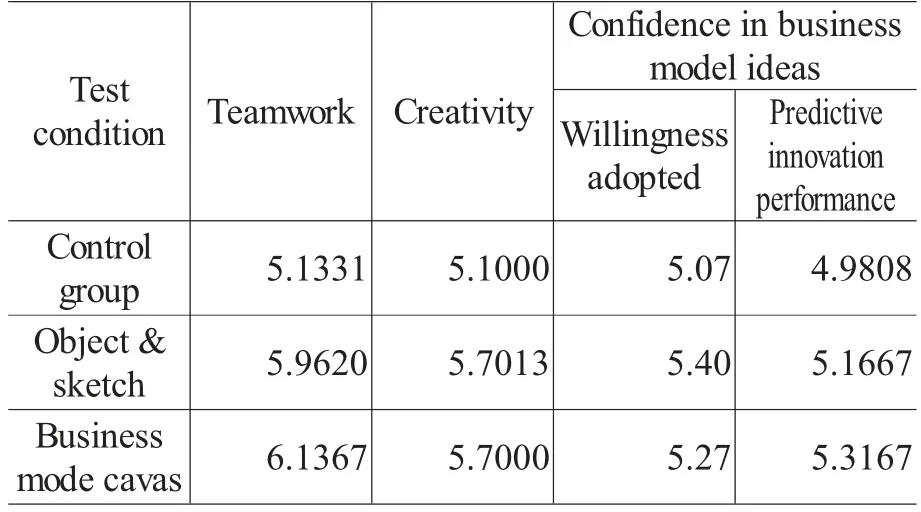
Table 11 Summary Sheet of Mean Value of Each Variable
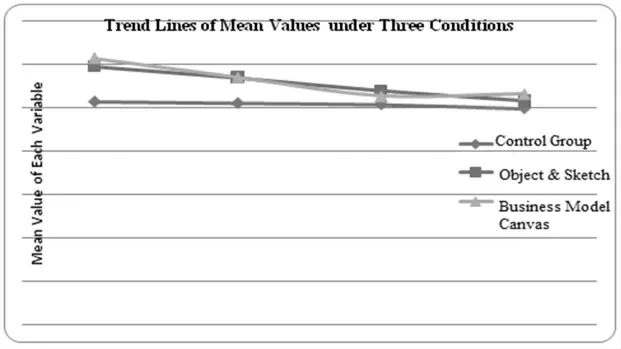
Figure 3 Trend Lines of the Mean Values of Each Variable under Three Conditions

Figure 2 Main Conclusion
5.3 Enlightenments on the Research
5.3.1 Using Auxiliary Tools in Business Model Innovation
The data confirm that the auxiliary tools have a significant positive effect on perceived teamwork and creativity in the process of diverse team’s business model idea generation. In the experiment, two auxiliary tools were roughly same in promoting teamwork and creativity which indicates that the enterprise can use object & sketch, business model canvas or the combination of both according to the actual situation. These auxiliary tools are available and cheap, and can greatly enhance positive effects in the process of diversity team innovation.According to the general practice in “New Generation of Business Mode”, large hanging canvas can be provided in specific practice,any idea can be directly pasted in corresponding modules, which is convenient for recording, moving and discussing,making the team discussion process more like a Serious Play which is expected to improve the innovation effect.
5.3.2 Using Diverse Teams and Appropriate Methods
There are four points noted in using diverse team for business model innovation.The first one is to emphasize the equal participation to ensure that there are no departments, positions or superiors in the process of team activities, and it is result-oriented.The second one is to combine brainstorming, mind mapping, and Six Thinking Hats to generate more ideas on the basis of auxiliary tools,which makes the craziest ideas play an important role as well as regular and realistic ideas, and form a discussion process.The third one is to keep the best team size 3 to 8 people. Fourthly, the author puts forward to formulate specific criteria for idea selection according to the major standards such as usefulness and novelty. The selection process can be referred to the three-step idea selection method of Luning Xie and Pengzhu Zhang[26].
- 中阿科技论坛(中英文)的其它文章
- Development Law and Enlightenments of Strategic Emerging Industries—Reviewing Development of Tianjin IC Industry and Looking Forward to Tianjin’s AI Industrial Development
- Research on the Development of Medical Big Data
- Design and Implementation of Online Evaluation Subsystem of China-Arab States Technology Transfer Comprehensive Information System for Technical Price
- Technology Foresight Research in the Field of Artificial Intelligence
- Technology Foresight on New Material Industry Development in Chongqing
- Study on Case Analysis and Cultivation Strategy of High Value Patent

